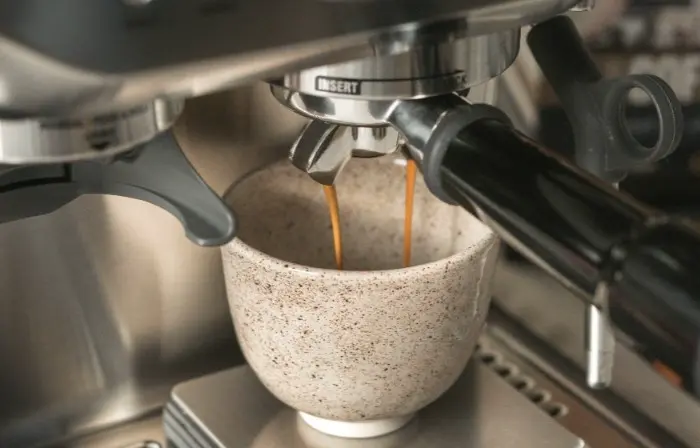Espresso is a concentrated coffee beverage brewed by forcing hot water through finely-ground coffee under high pressure. One of the most common questions among coffee enthusiasts is: How much water is in an espresso shot? The answer depends on several factors, including the type of espresso, brewing standards, and personal preference.
This article explores the water content in espresso shots, discussing standard measurements, extraction principles, and variables that influence the final output. Whether you’re a home barista or a coffee professional, understanding these details will help you brew better espresso.
Understanding Espresso Basics
Espresso is different from regular drip coffee. It uses a finer grind, higher pressure, and a shorter extraction time. The result is a small, strong shot with a rich flavor and creamy layer called crema.
A standard espresso shot is typically made with 7 to 9 grams of coffee and yields about 30 milliliters (1 ounce) of liquid. However, variations like ristretto (shorter extraction) and lungo (longer extraction) change the water content.
Standard Water Volume in Espresso
The Specialty Coffee Association (SCA) defines a single espresso shot as 30 milliliters (1 ounce) of water extracted from 7 to 9 grams of coffee. A double shot uses 14 to 18 grams of coffee and yields 60 milliliters (2 ounces).
These measurements are guidelines, not strict rules. Many specialty coffee shops adjust ratios based on desired flavor profiles. For example, some prefer a 1:2 ratio (1 part coffee to 2 parts water), while others may use 1:1.5 for a richer taste.
Factors Affecting Water Volume
Several variables influence how much water ends up in an espresso shot:
Coffee Dose
The amount of ground coffee used directly impacts water volume. More coffee means less water passes through, creating a stronger shot.
Grind Size
Finer grinds slow water flow, reducing extraction volume. Coarser grinds allow more water to pass quickly, increasing volume but potentially weakening flavor.
traction Time
The ideal extraction time is 25 to 30 seconds. Shorter times (like ristretto) use less water, while longer extractions (like lungo) add more.
Brewing Pressure
Espresso machines use 9 bars of pressure. Variations in pressure affect how much water is forced through the coffee puck.
Tamping Pressure
How firmly the coffee is tamped influences water flow. Uneven tamping can lead to over- or under-extraction.
Espresso Variations and Water Content
Different espresso styles adjust water volume for unique flavors:
Ristretto
A ristretto uses half the water of a standard shot, yielding about 15 milliliters (0.5 ounces). It’s sweeter and more concentrated.
Lungo
A lungo extends extraction, using double the water (about 60 milliliters or 2 ounces). It’s milder but can taste bitter if over-extracted.
Doppio
A doppio is simply a double shot (60 milliliters or 2 ounces), using twice the coffee and water of a single shot.
Measuring Water in Espresso
Baristas often use scales to measure both coffee and liquid output. This ensures consistency. A 1:2 ratio means if you use 18 grams of coffee, you should aim for 36 grams of liquid espresso.
Some machines have volumetric controls, dispensing a set amount of water automatically. Manual machines rely on the barista’s timing.
The Role of Crema
Crema is the golden foam on top of espresso. It forms when CO2 escapes from the coffee during extraction. While it contains some water, it’s mostly oils and gases.
Crema adds texture but doesn’t significantly alter water volume. A well-extracted shot should have a balanced crema layer—too little suggests under-extraction, while too much may indicate over-extraction.
Water Quality and Espresso
The water used in brewing affects taste and extraction. Hard water (high mineral content) can clog machines, while soft water may lack necessary minerals for flavor.
Ideal water for espresso has:
- A balanced mineral content (50-100 ppm hardness)
- Neutral pH (around 7)
- No chlorine or strong odors
Common Mistakes in Water Measurement
Over-Extraction
Using too much water makes espresso bitter and hollow.
Under-Extraction
Too little water results in a sour, weak shot.
Inconsistent Tamping
Uneven pressure causes channeling, where water bypasses coffee grounds unevenly.
Adjusting Water for Personal Taste
Preferences vary—some like intense ristrettos, while others prefer milder lungos. Experiment with:
- Coffee-to-water ratios (1:1, 1:2, 1:3)
- Extraction times (20-35 seconds)
- Grind sizes (finer for less water, coarser for more)
Conclusion
The amount of water in an espresso shot depends on the brewing method, coffee dose, and desired strength. A standard shot uses about 30 milliliters (1 ounce), but variations like ristretto and lungo adjust this volume.
By understanding extraction principles and experimenting with ratios, you can perfect your espresso. Always use quality water, measure carefully, and adjust based on taste. With practice, you’ll brew espresso that’s balanced, flavorful, and tailored to your preference. Now that you know how water affects espresso, you can fine-tune your technique and enjoy better shots every time.
Relate topics:
How Many Ounces of Espresso Beans in a Shot?
Where to Buy Stovetop Espresso Maker
How to Make Cappuccino with Nespresso Vertuo?


